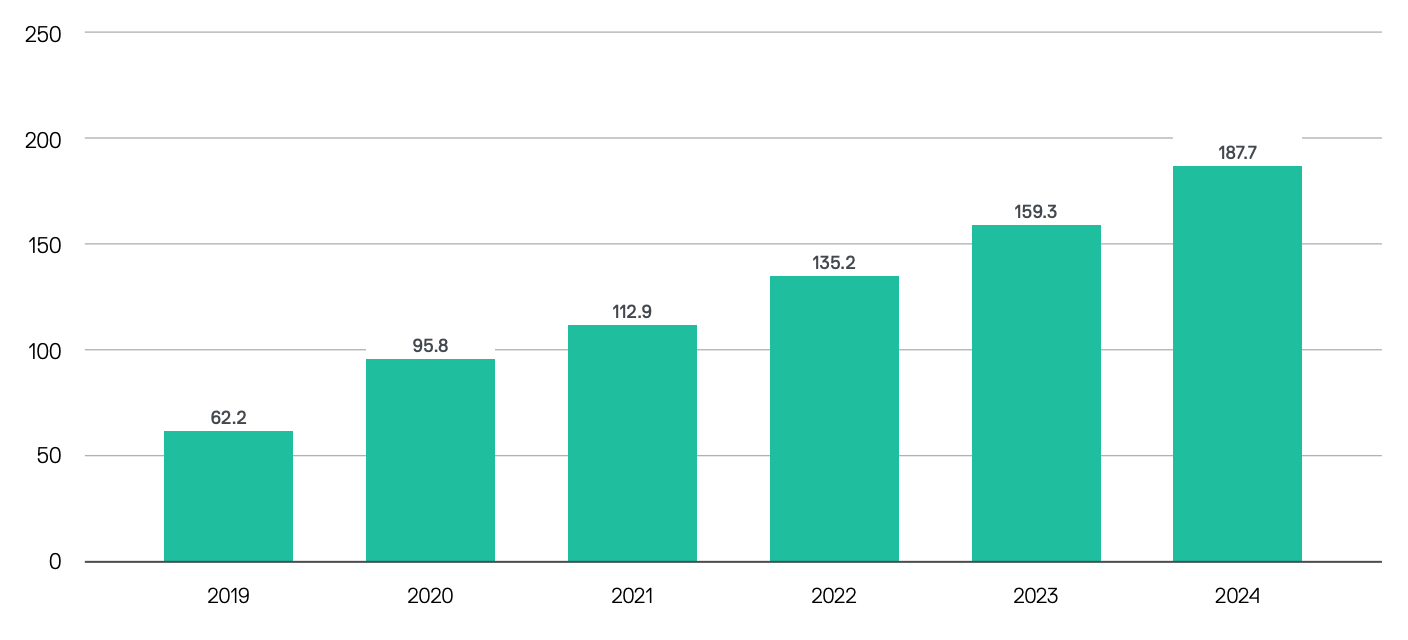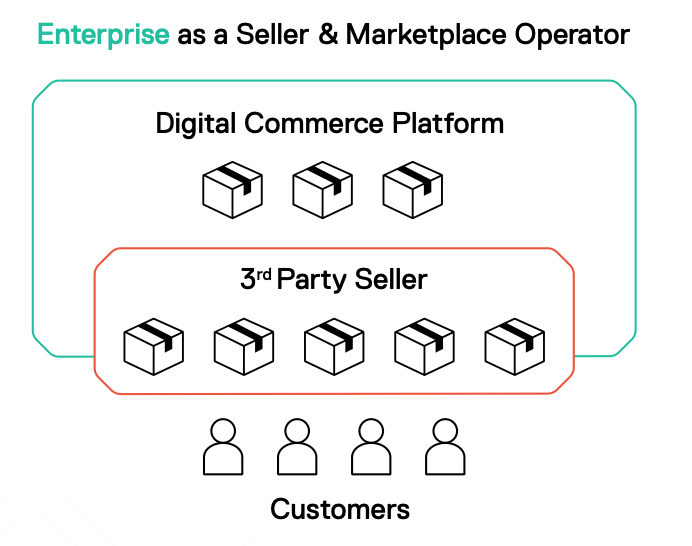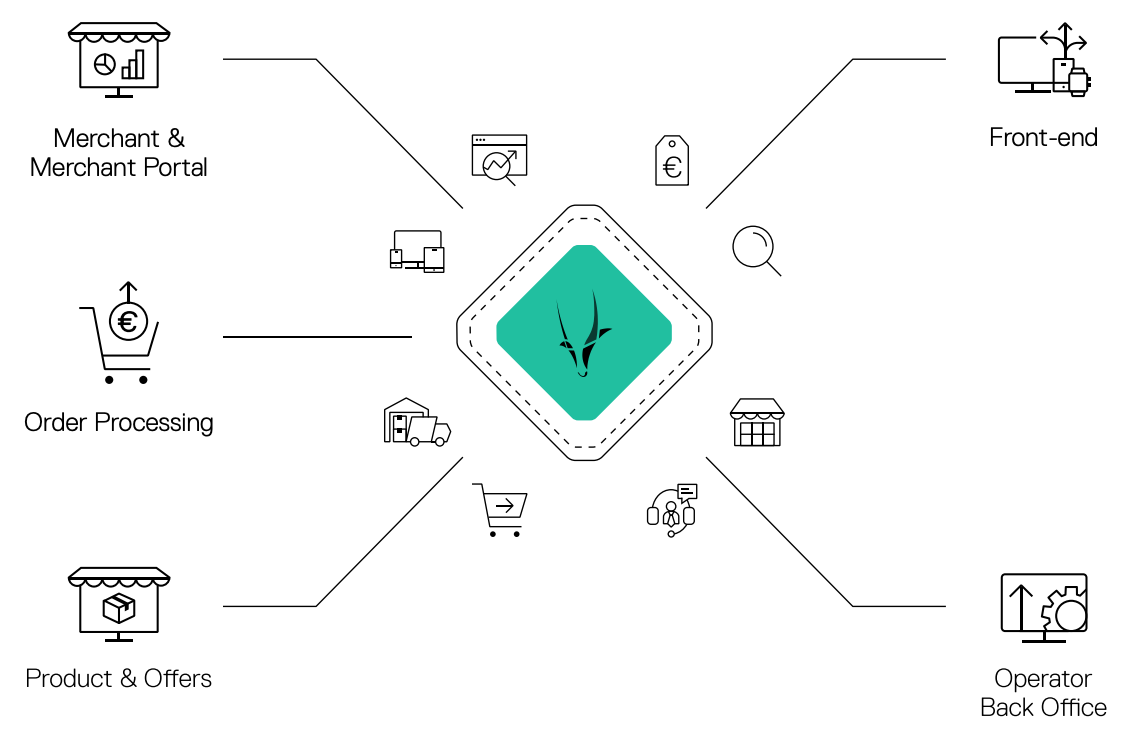Why you should start a grocery marketplace with Spryker
Evaluating key growth strategies and the advantages of grocery marketplacesIntroduction
2020 redefined the operating model for several grocery stores around the world. In the past, not much attention was given to the online stores. For those who had invested in one prior to the start of the pandemic, it was merely a secondary sales channel for customers who were occasionally unable to shop in stores.
As lockdowns disrupted in-store sales, grocery store owners unexpectedly had to navigate the challenges that came with virtually serving customers across various locations.
According to a recent report, experts estimate that the e-commerce grocery penetration will double in the next five years. The rapid change in consumer behavior can be largely attributed to this growth.
Consumers who had never shopped online purchased groceries via digital channels for the first time during the pandemic. In fact, in the U.S, a study found that 54.3% of adults had purchased groceries online in the last 12 months. Even with vaccine rollouts and some sense of normalcy, many shoppers see online grocery shopping as advantageous because of the convenience it provides.

Currently, online grocery sales show no signs of slowing down; further growth is expected in the near future but as consumers slowly return to shopping at brick and mortar stores, grocery chains must devise more innovative ways to keep their online channels active.
Some challenges that could arise would be price considerations. Consumers have a natural tendency to compare prices and product options. Being physically present in a grocery store often makes this process more seamless. Finding the best deals on comparable items is one major concern customers have when shopping online.
Another major concern with online grocery shopping will be the cost of delivery versus store walk-ins. To truly satisfy consumers, grocery chains must implement business models that can help them lessen the burden of grocery delivery for most or at least a select group of loyal customers while still guaranteeing increased revenue and higher profit margins for the business.
Making the shift to a marketplace business model can help grocery chains address some of these key challenges.
Marketplace As a Business Model
An online marketplace functions by bringing together multiple sellers or merchants on a single platform. In a traditional setting, most grocery stores carry items from local retailers or farmers. An online grocery marketplace is built in the same way, only in this case multiple grocery stores will be accessible to potential customers on one website.
In North America, grocery marketplaces such as Amazon Fresh and Instacart have disrupted the industry and increased the reliance on delivery services. For stakeholders choosing to go into the grocery marketplace business, there is still room to gain market share by building a unique platform.
With an Enterprise Marketplace, grocery store owners can expand their e-commerce business by inviting more merchants to sell their products on the updated platform. Thereby giving the grocery store owner a chance to run the store (become a marketplace operator) and also sell to consumers (play the role of a merchant) alongside other third-party sellers.

Product and Price Variation
A wider product portfolio automatically equates to more sales. Running a marketplace gives customers the much needed flexibility to compare prices and product offerings from various merchants. They can filter through your platform and find the best deal on comparable products all from the comfort of their home. This addresses the second key challenge plaguing online grocery shopping: Marketplaces create room for more product searches and greater product discovery. The more consumers find new and exciting products, the more likely they are to make a purchase. Inviting other merchants to sell on your website gives your customers access to more products without you having to carry more inventory.
Revenue
A marketplace allows for countless revenue streams. Aside from regular product sales, you can increase your revenue through a commission based business model or a subscription model. In a sense, a subscription model eliminates the problem of exorbitant delivery fees for customers because customers who tend to pay a membership fee tend to receive greater value for money. Delivery fees, discounts and additional perks are usually covered under the subscription model and this provides value to both the customer and the marketplace operator. Similarly, by charging a commission every time your merchants sell a product, you can increase your revenue significantly.
Lower Risk
Setting up a marketplace lowers the operational and financial risks associated with running an online store. Merchants become joint stakeholders and they lessen the burden of having to stock and manage large amounts of inventory.
Convenience
As with any well-functioning online store, a marketplace guarantees convenience for customers. More so, in a marketplace, shoppers can purchase goods from their preferred stores all on one platform. They can shop around the clock and have items delivered straight to their doorstep. For customers looking to lower delivery fees, you could also offer the option of curbside pick up, where they buy online and schedule time to pick up their groceries from the merchant’s physical store.
Localization Advantage
A grocery marketplace gives a marketplace operator the chance to work with local merchants in every state or city. Consumers can adjust their location to shop from the grocery stores closest to their zip code.
Spryker’s Enterprise Marketplace Solution
Spryker offers an Enterprise Marketplace solution that enables retailers to set up a fully functioning marketplace. The Enterprise Marketplace ensures a consistent user experience for the end customer, the third-party merchants, and the grocery store owner, who acts as the marketplace operator.
Built on the Spryker Cloud Commerce OS, this Enterprise Marketplace solution also allows existing Spryker customers to effortlessly upgrade their B2C or B2B shops to a marketplace. Extensive new capabilities ensure that all the needs of running a Marketplace are met, like additional back-office functionalities, a merchant portal, and several composable integrations that make the marketplace easy for the end user to navigate.

About Spryker
Spryker is the leading global composable commerce platform for enterprises with sophisticated business models to enable growth, innovation, and differentiation. Designed specifically for sophisticated transactional businesses, Spryker’s easy-to-use, headless, API-first model offers a best-of-breed approach that provides businesses the flexibility to adapt, scale, and quickly go to market while facilitating faster time-to-value throughout their digital transformation journey. As a global platform leader for B2B and B2C Enterprise Marketplaces, IoT Commerce, and Unified Commerce, Spryker has empowered 150+ global enterprise customers worldwide and is trusted by brands such as ALDI, Siemens, ZF Friedrichshafen, and Ricoh. Spryker is a privately held technology company headquartered in Berlin and New York backed by world class investors such as TCV, One Peak, Project A, Cherry Ventures, and Maverick Capital. Learn more at spryker.com.